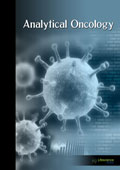jao
|
|
Abstract: In this manuscript we aim to take on the controversies in oncology, such as those related to costs and screening guidelines. Are we recently at new turning point with our existing methodology? During the past 30 years of evolution methods of awareness and screening have lead to an emphasis on early diagnoses of cancer and not only cancer. Recent trends and clinical trials show that these goals have not been met. International data demonstrate significant increase in early stage disease, without a proportional decrease in later-stage disease. We need to more differentiate in methodology because cancers are heterogenous with multiple paths, not all of which progress to metastases and death. This broader definition of disease named cancer must include also indolent disease that causes no harm during patients lifetime. Overdiagnosis and overtreatment result in billions of USD of wasted money. Our methodology must be completed with methods which take proper account of the real-life environment. Keywords: The stress-induced mutagenesis, the epigenetic diversity, stress response, awareness and screening, overdiagnosis, overtreatment.Download Full Article |
|
|
Abstract: It is well-known that colorectal carcinoma is a disease involving multistep carcinogenesis (hyperplasia-adenoma-carcinoma-metastasizing carcinoma). It is also a disease where therapeutically important driver mutations (especially in the EGFR signaling pathway) have been identified. Since genetic mutations can serve as good diagnostic and predictive markers, their reliable detection in the early stages of the disease and also in the follow-up of treatment efficacy is crucial. There is a fundamental problem encountered with the commonly used formalin-fixed paraffin-embedded (FFPE) specimens from biopsied tumor tissue i.e. it is unlikely that the material for the mutation analysis will be available in either the early stage of the disease or during the treatment period. Therefore recently attempts have been made to identify reliable markers from plasma/serum or from stool specimens. In particular, non-invasive stool specimens have been speculated to represent the situation of ongoing tumorigenesis and thus they can be used to assess treatment efficacy in the follow-upof the patient. The key aims of this paper are firstly, to review the key methodological points when studying genomic alterations in DNA extracted from cells in stool specimens, and secondly, to review results related to biomarker screening and their therapeutic importance. A further aim is to present our new findings by focusing on the issues inherent in Next Generation Sequencing of stool specimens from patients with gastrointestinal tumors. Even though the focus of our paper is human genomic alterations in stool specimens, in our “future aspects” chapter, we also deal with the bacterial spectrum and its possible interaction with the genomic mutations. Keywords: Mutation, DNA, Stool specimen, Colorectal carcinoma, Next generation sequencing.Download Full Article |
|
|
Abstract: Patients affected by malignant brain tumor present an extremely poor prognosis, notwithstanding improvements in surgery techniques and therapeutic protocols. Late diagnosis and the limitation of conventional therapies are major reasons for this unsolved clinical problem. The blood-brain barrier formed by a complex of endothelial cells, astrocyte and pericytes reduces notably the diffusion of a large number of therapeutic agents. Nanotechnology involves the design, synthesis, and characterization of materials and devices that have a functional organization in at least one dimension on the nanometer scale. The nanoparticles have emerged as potential vectors for brain delivery able to overcome the difficulties of modern strategies. Nanoparticles drug delivery systems can be, also, used to provide targeted delivery of drugs, improve bioavailability, sustains release of drugs for systemic delivery. Moreover, multi-functionality can be engineered into a single nanoplatform so that it can provide tumor-specific detection, treatment, and follow-up monitoring. In this study we will focus on the blood-brain barrier role and possibilities of its therapeutic overcoming. Recent studies of some kinds of nanoparticles systems in brain tumors treatment are summarized. Keywords: Blood-Brain Barrier,Brain Tumors, Glioma, Glioblastoma Multiforme, Nanoparticles. |
|
|
Abstract: Myeloid derived suppressor cells (MDSC) are specialized immunoregulatorycells and major cause of immunosuppression in oral cancer tumor microenvironment. Which are generated by various mediators of chronic inflammation. MDSC exerts its effects by two mechanisms, first is enzymatic mechanism by two enzymes which are elevated in MDSC are arginaseand iNOS2, second is non-enzymatic mechanism by ROS, peroxynitrate ,L-selectin and interaction with other immune cells. It also has a role in progression of oral cancer by secreting inflammatory mediators. This article brief about the MDSC in immune regulation and tumor progression in oral cancer tumor microenvironment. Keywords: iNOS, Arginase 1, COX-2, HIF-1 Alfa, T regs, Peroxynitrate, S 100 A8/A9, ROS. Download Full Article |
|
|
Abstract: Prostate cancer exhibits both epithelial to mesenchymal transition and neuroendocrine differentiation. The major barrier to targeting epithelial to mesenchymal transition is that it is heavily involved with normal biology, such as wound repair. In prostate cancer, cAMP can trigger both neuroendocrine differentiation and epithelial to mesenchymal transition in a Snail-dependent manner We will review inhibition of cAMP-signaling as a target for drug development with the goal of simultaneously blocking both neuroendocrine differentiation and epithelial to mesenchymal transition in a tissue and tumor selective manner. Keywords: Androgen-independent prostate cancer, protein kinase A, adenylyl cyclase, Snail, cyclic nucleotide phosphodiesterase, heterotrimeric G protein.Download Full Article |




